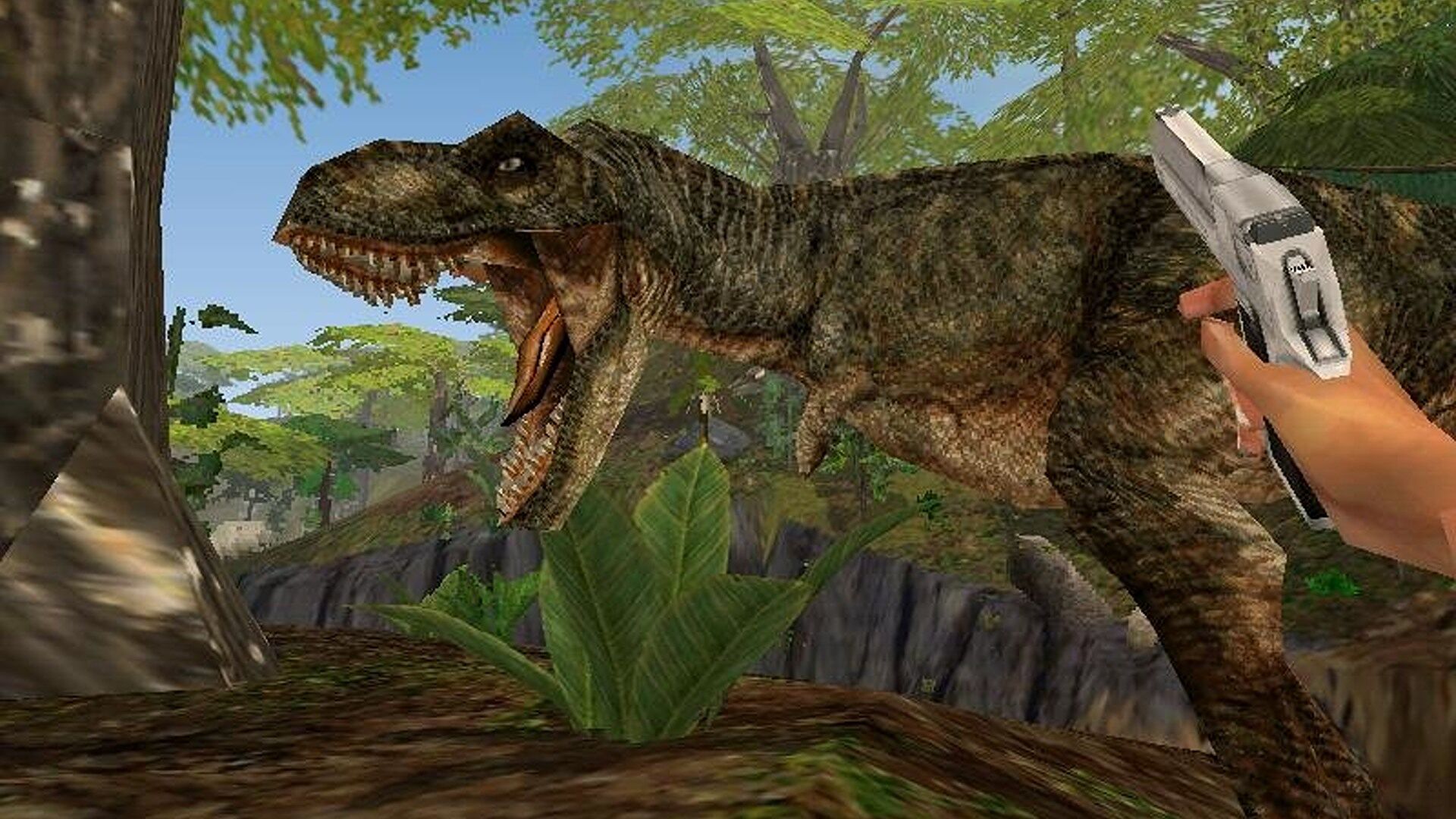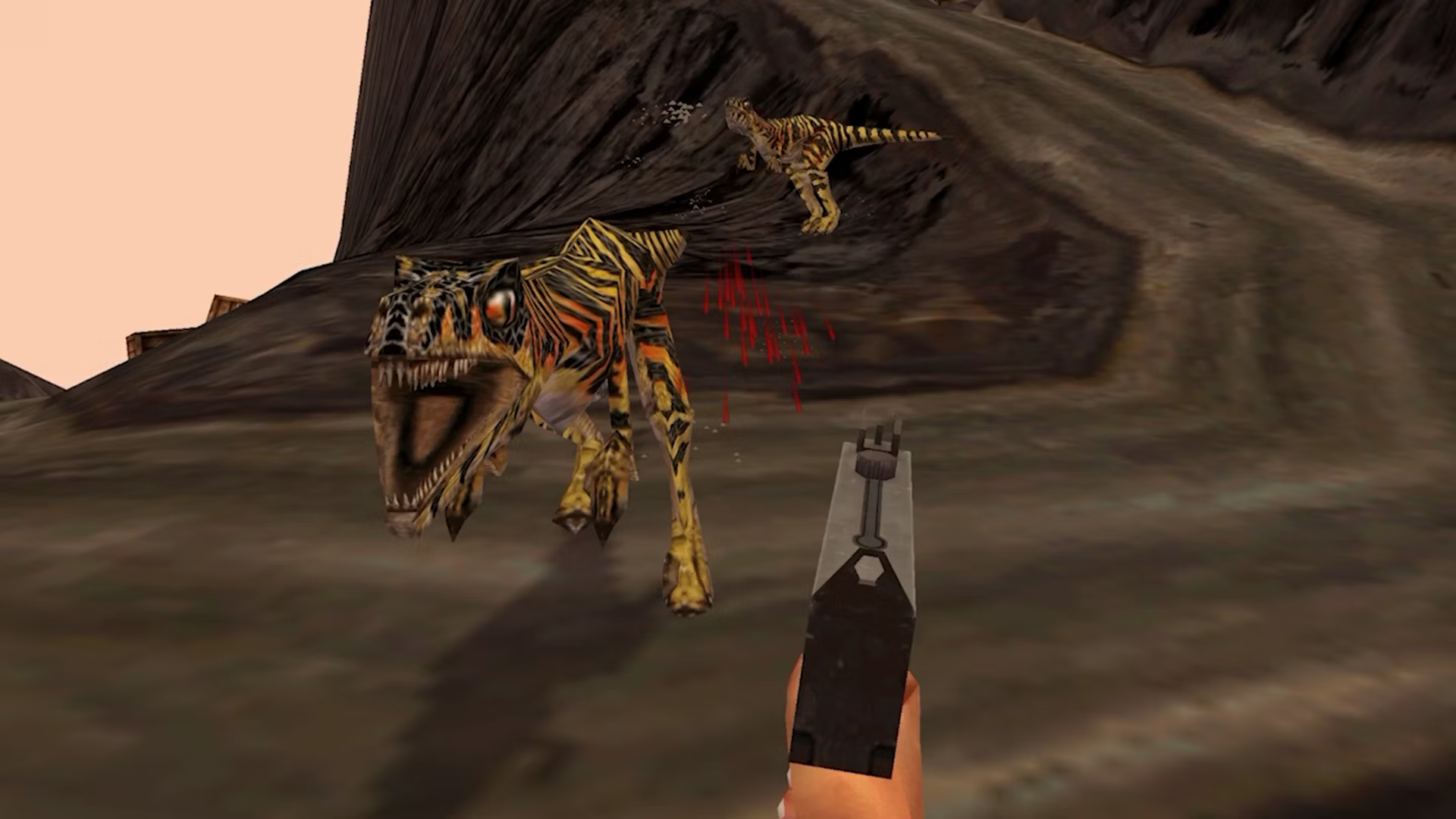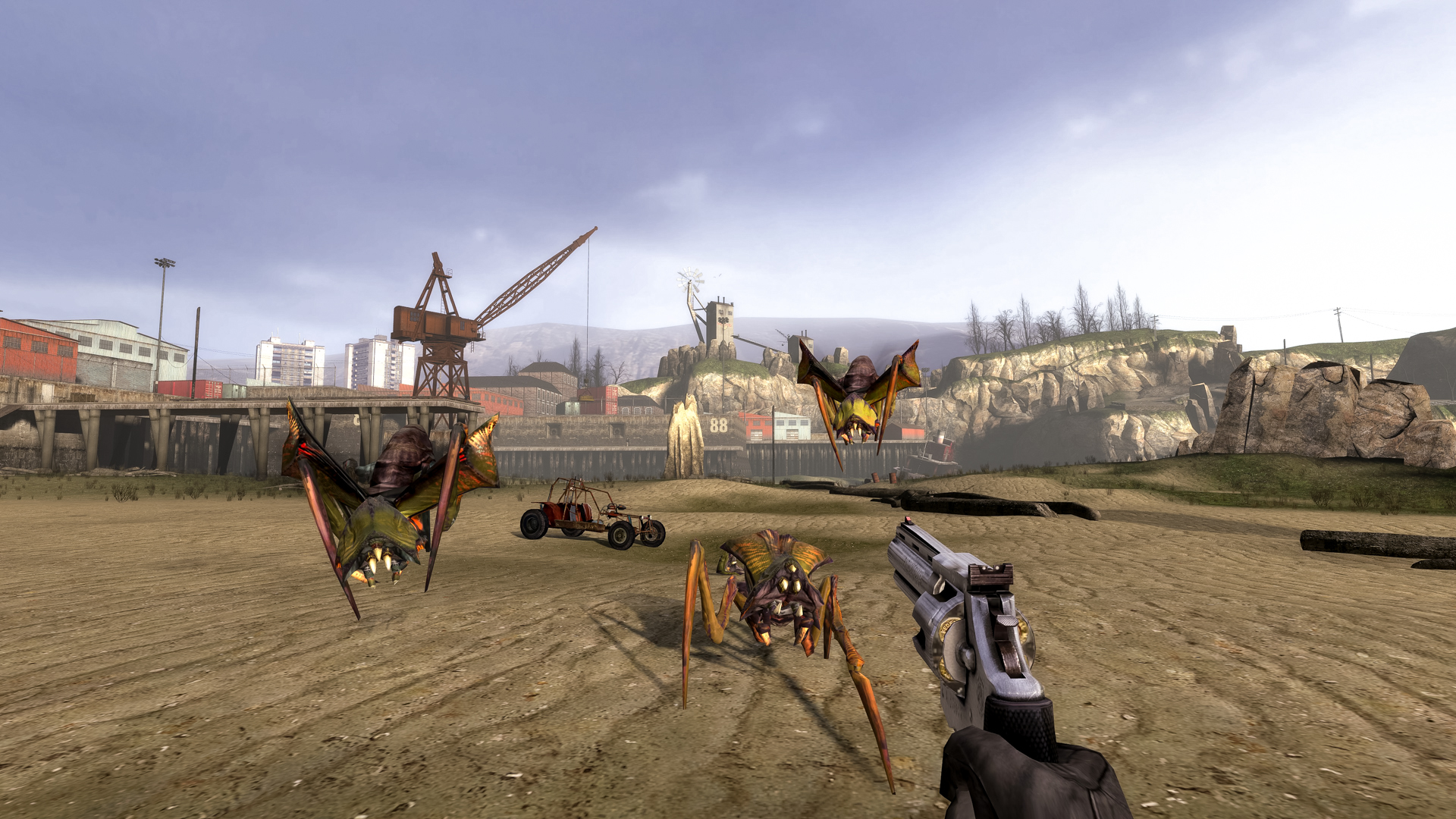
At some point in the mid-90s wake of Jurassic Park’s release, two former Looking Glass developers had an idea. The first movie was a pop culture phenomenon, reasoned Seamus Blackley and Austin Grossman, and with a sequel in the works, people might quite like to play a game bearing the Jurassic Park name.
They secured the license for that upcoming movie, 1997’s The Lost World: Jurassic Park, and shopped the project around to studios, finding a natural home at Dreamworks Interactive, a studio Steven Spielberg himself had helped to establish. Anyway, development went absolutely smoothly from there, and the game was released bang on time to critical acclaim.
Except, of course, that this project was Jurassic Park: Trespasser, one of the most notoriously strange, glitchy, delayed, over-budget, nonconformist examples of 1990s game development that we have.
Development didn’t go smoothly – a whole swathe of features were ditched (protagonist Anne’s left arm, for example), there was a major tone shift at the 11th hour from survival horror to action shooter, and many of the development team had little to no experience actually developing videogames. Art director Terry Izumi had previously designed Disney’s theme parks. George Edwards, credited with ‘additional artwork’ on Trespasser, was a movie animator who’d worked on many Disney features. It was a team of incredibly talented creators, many of whom just happened not to have made a videogame before.
The game didn’t release bang on time – it sailed past The Lost World: Jurassic Park’s 1997 cinematic release and right on into late 1998.
Late to the party

And when it did arrive, there was no critical acclaim for Dreamworks’ profoundly odd arm-waggling physics sandbox. Whatever game we were expecting at the time from a Jurassic Park movie tie-in, this was not it. Eerily quiet. Extremely light on actual dinosaurs. Instead of a health bar, it had a pair of enormous boobs with a heart tattoo. And when a velociraptor did appear, there was a 25% chance it’d enter by duck-walking onto the screen and then lolling its neck around in slow motion as if you were watching a David Lynch puppet show. Just such a strange game.
Critics panned it. Edge magazine awarded it a 2/10. PC Gamer UK gave it a more generous 68%, but the overall tepid reception from reviewers was a kiss of death, commercially speaking. It sold around 50,000 copies at launch. For a game that had run over budget several times, that was… a shame.
That should have been the end of the story for Jurassic Park: Trespasser. It was by no means the only glitchy and conceptually poorly defined game release of the nineties, and within the very issues of the gaming magazines that slammed it, there were probably 25 other mediocre releases from that month. It should have been forgotten, like Wargasm, Codename: Eagle, and Jazz Jackrabbit 2.
It wasn’t, of course. Trespasser did have significant problems, and those problems made it extremely difficult to play. But it also had incredible ideas.
The most significant of all was the implementation of physics. This wasn’t a game where you walked over a spinning shotgun on the floor and suddenly found yourself holding it, like that filthy casual game Quake allowed you to do. In Trespasser when you see a gun, you walk up to it, press the left mouse button to extend Anne’s right arm, press the right mouse button (with LMB still held) to pick it up, and then aim it using the mouse, with further modifiers on Ctrl and Shift for wrist angle. Spacebar fired the gun.
Immersive dinosaur sim

That level of interactivity would be difficult to do in Half-Life 2, with Valve’s physics savants at the wheel. In 1998 with a team of newcomers to videogames doing their best in Adobe Photoshop 5 and 3D Studio Max, it was a living nightmare.
But still, what a concept. This was video games going a level deeper in immersion, having you actually pick up a gun like it’s an object and wield it according to physical properties. Blackley and Grossman were ex-Looking Glass, let’s not forget. Ultima and System Shock were in their DNA. It was all about building virtual worlds that were as interactive, realistic, and immersive as possible. And even though the precise execution of every single mechanic in Trespasser was held together with sellotape and prayers, the concepts were revolutionary.
In fact, Half-Life 2 would implement a lot of the same physics puzzles originally found in Trespasser. By 2007, the collision detection, object behavior, and control were lightyears ahead, but the concepts were right there in Dreamworks Interactive’s title: shoot at the stack of objects to topple them and make a bridge, to get the object you need from the top, or to damage an enemy underneath.
You felt the benefits of that physics model in Trespasser’s combat, too. When you achieved the miraculous and landed a shotgun hit on a moving velociraptor – there’s no HUD or reticle – you saw how the force of the shell pushed the raptor backward. It would break its stride, staggering for balance, eventually succumbing to the wound and collapsing to the floor with a heavy gratifying thump.
And let’s talk about that missing HUD. The choice to depict Anne’s health as a heart tattoo is a classic bit of ‘90s ‘only teenage boys play games’ thinking, but conceptually it’s impressive that the team found a way to convey everything the player needs to know in the game environment itself. Often it’s Anne’s voice actor Minnie Driver doing the heavy lifting herself – as you fire off rounds from a gun, she counts down how many are in the chamber. When you find a keycard, she steps in instead of a quest marker to remind you which door it might be for. That would still be impressive in 2023. In ‘98, it's astonishingly clean design from a team of outsiders and newcomers.
These qualities, and I think the atmosphere of exploring Isla Sorna in such a freeform manner, kept Trespasser in people’s heads in the years after release. Mods and patches from amateur developers began to spring up on Tripod sites with the noble intention of fixing all the rough edges in the original game and letting you enjoy the good stuff unimpeded.
That’s still going on today. The venerable Trescom last updated its compatibility patch in February 2022, making Dreamworks’ 25-year-old title compatible on Windows 10 hardware and less buggy than ever.
Perhaps these fan-made patches, the Jurassic Park name, or the particular notoriety of Trespasser kept connecting it to an audience for the last quarter-century. Whatever the reason for its enduring cult status, players who come to it in 2023 will find a remarkably forward-thinking adventure game that lays so many foundations for the physics-based titles to come, and for the open-world exploration games, it can’t help but foster respect.
Ironically, for a game about a maverick visionary’s flawed project, Trespasser took on the feeling of a John Hammond venture itself. Too ambitious for its own good. So wrapped up in whether it could do something it forgot to ask if it should. Dormant for many years, but not without signs of life. It might have taken a bit longer than expected, but by now perhaps that Dreamworks Interactive team gets the credit it deserves for putting so many influential ideas forth in one perplexing and perpetually fascinating game.







